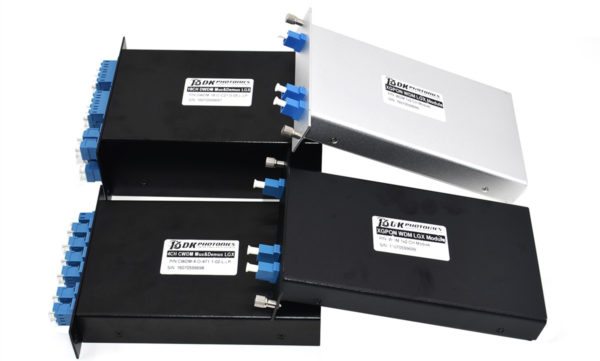Wavelength Division Multiplexing (WDM) is a technology which allows you to expand the capabilities of your existing fiber optic network without the addition of extra optical fiber. Through this technology, a Mux can multiplex various optical signals of different wavelengths on a single optical fiber without the need for additional optical fiber. This helps a lot in relieving the fiber exhaustion and extending the link capacity.

In general, there are two types of Mux/Demux – CWDM and DWDM. In this blog, we will discuss the CWDM type in detail.
CWDM
CWDM stands for Coarse Wavelength Division Multiplexing. A CWDM Mux/Demux is used to increase the capacity of the fiber in 4, 8, 16, or 18 channels. By incrementing the channel spacing between different wavelengths, this device allows an easier, simple and affordable method to carry up to 18 channels on a single fiber. It is mainly used for providing the flexibility to increase the capacity of existing fiber infrastructure.
Application of CWDM Mux/Demux
This device is widely used in a number of applications such as:
- WDM network
- Line monitoring
- Cellular application
- Access network
- Fiber amplifier
Each of the CWDM channels uses 20nm of space and all of them consume most of the operating range of single mode. Every channel carries data independently and there is no effect of one channel on the other channel. This allows network designers to transfer different data rates and protocols to meet the different requirements of different customers without any interference. The usual operating wavelength range for 16 channels varies from 1270 to 1610 nm and the most commonly used CWDM Mux/Demux are the ones which come with 16 or 18 channels.
So, which one you should choose for your application? Let’s find out.
16 Channel vs. 18 Channel CWDM Mux/Demux
The capacity of a CWDM network largely depends on Mux/Demux. If there are more channels of Mux/Demux, the capacity of CWDM network will also be higher. The channel number of most of the Mux/Demux ranges from 2 to 18. Among these, 16 and 18 channel CWDM Mux/Demux devices are more commonly used in the telecommunication industry. Except for the fact that the latter one provides two more channels than the former, there is no difference between them. Since in CWDM Mux/Demux with 18 channels, the capacity is increased, there will be more insertion loss.
So, there is no such thing about superiority between these two. Which one you should choose depends on your specific requirement and application scenario. If your application involves broader network capacity and scalability, an 18 channel CWDM Mux/Demux is recommended to use, otherwise you can go for 16 channel CWDM Mux/Demux.